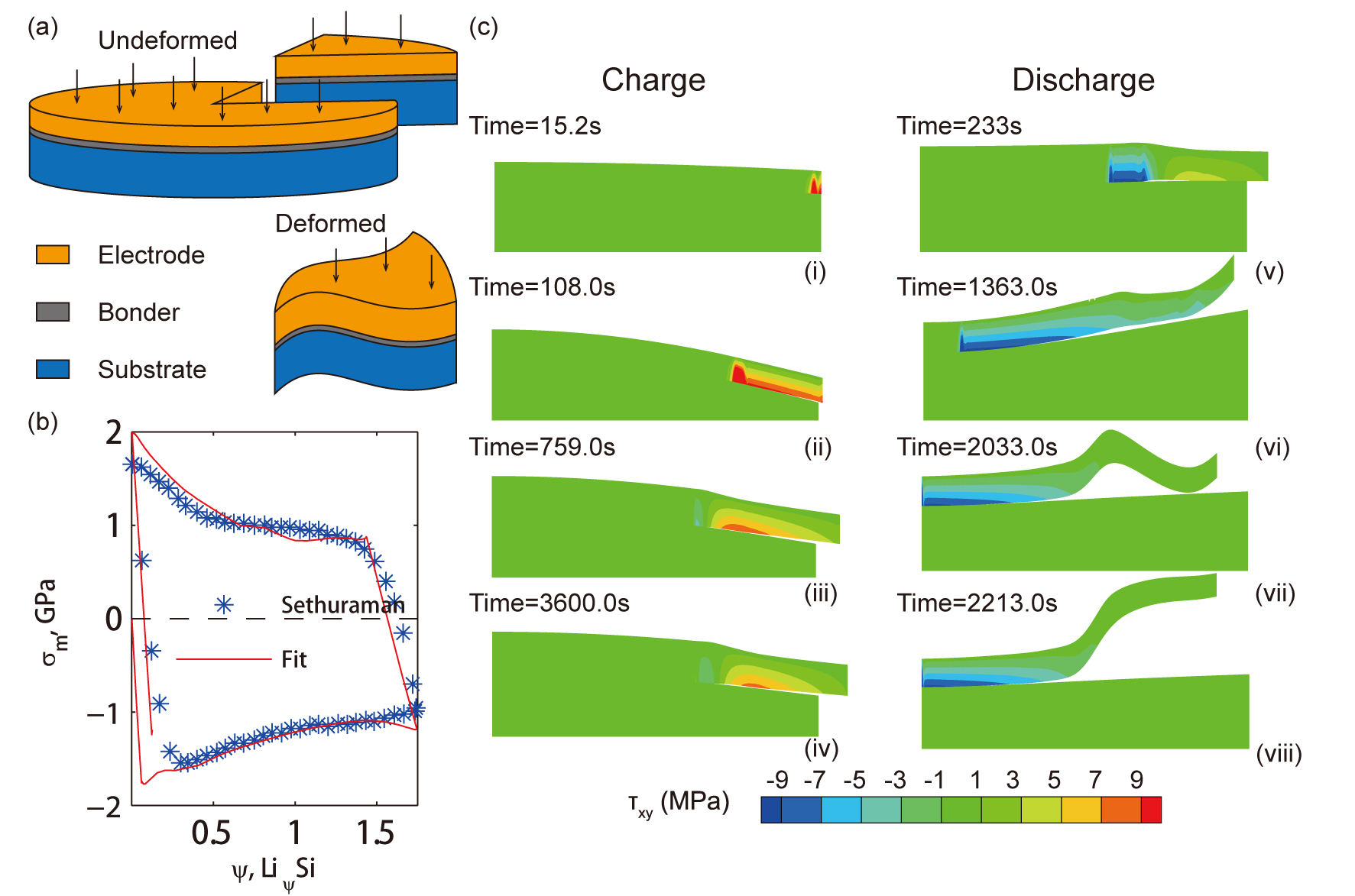- Home >> News >> Research Progress
Research Progress
Constitutive modeling on the electrochemical-mechanical processes of the electrode material
High charge capacity anode materials like Si and Sn have attracted great interests in recent years. However, lithiation and de-lithiation in anode materials inevitably result in huge volume expansion and contraction, lead to high internal stresses and, thus, poor cycle life of high capacity anode batteries.
In order to understand the electrochemical-mechanical processes of the electrode material during charging and discharging, stresses in thin film electrodes have be measured by monitoring the bending of the electrode-substrate bilayer and using the Stoney equation. However, the validity of the above equation is contingent on the following assumptions: (a) hf,<<hs , (b)hf, remains nearly unchanged during the deformation, and (c) the interface between the film and the substrate is non-deformable and of zero-thickness. These conditions are difficult to satisfy for high charge capacity anode materials.
Researchers from the Institute of Mechanics, Chinese Academy of Sciences and the University of Kentucky developed a robust electrochemical-mechanical coupled constitutive model and the corresponding numerical procedure to investigate the influence of large plastic deformation and interfacial failure on the measured stress in thin film electrodes. With the numerical results, we analyze on examining the validity of Stoney-equation for in-situ stress measurements, identifying how the constitutive behavior of electrode materials and film-substrate interfacial properties affect the measured stress-capacity curves of electrodes, and establishing the relationship of electrode material parameters with the characteristics of stress-capacity curves.
The research is published in Journal of power sources and Journal of the Mechanics and Physics of Solids. Funding supported by National Natural Science Foundation of China (No. 11425211), the Strategic Priority Research Program of the Chinese Academy of Sciences (No. XDB22020200) and US National Science Foundation award (No. 1355438) are acknowledged.

